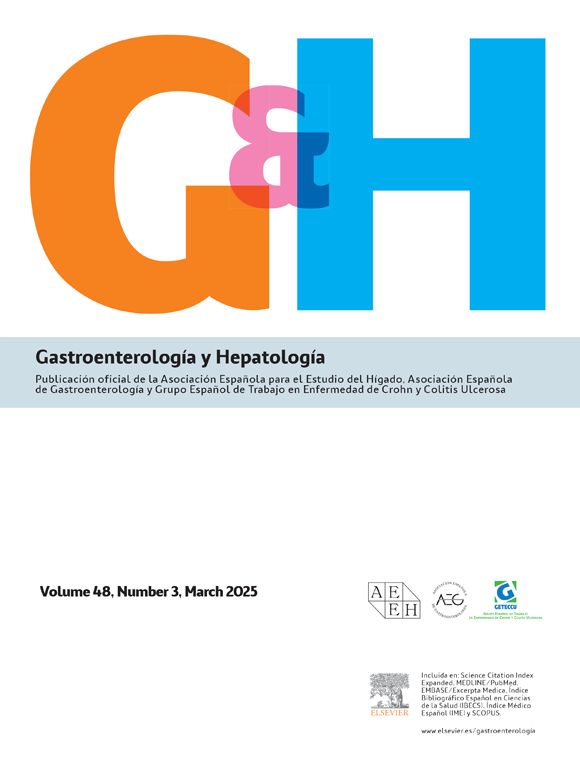Crohn's disease (CD) is heterogeneous, and proximal involvement in the small bowel (SB) is associated with worse outcomes. Nonetheless, studies on the impact of duodenal and jejunal lesions in SB CD are limited. This study aimed to investigate the clinical characteristics and outcomes of individuals diagnosed with SB CD, comparing those with and without proximal inflammation.
MethodsA cohort of 53 treatment-naive SB CD patients that underwent Capsule Endoscopy at diagnosis were retrospectively selected. The inflammatory activity was quantified using the Lewis Score for each SB tertile.
ResultsThirty-seven (69.8%) patients displayed inflammatory activity in the first and/or second tertile together with third tertile involvement (Proximal+T3 group). Sixteen (30.2%) had inflammation in the third tertile only (T3 group). Individuals in the Proximal+T3 group had a higher risk for moderate-to-severe inflammation (OR 4.93, 95% CI: 1.3–18.3, p=0.013). A subgroup analysis for those with mild inflammatory activity showed that individuals in the Proximal+T3 group initiated biologic drugs more often (OR 11, 95% CI: 1.1–109.7, p=0.036).
ConclusionProximal SB lesions are associated with increased inflammatory activity, necessitating more frequent use of biologics in patients with mild disease. Early detection of proximal SB CD with Capsule Endoscopy may contribute to timely treatment.
La enfermedad de Crohn (EC) es heterogénea, y la inflamación proximal en el intestino delgado (ID) se asocia a un peor pronóstico. Sin embargo, los datos sobre el impacto de las lesiones duodenales y yeyunales en la EC del ID son limitados. Este trabajo tuvo como objetivo investigar las características clínicas y los resultados de individuos diagnosticados con EC del ID, comparando aquellos con y sin inflamación proximal.
MétodosSe seleccionó retrospectivamente una cohorte de 53 pacientes con EC del ID sin tratamiento previo que se sometieron a cápsula endoscópica en el momento del diagnóstico. La actividad inflamatoria se cuantificó utilizando el Score de Lewis para cada tercio del ID.
ResultadosTreinta y siete pacientes (69,8%) presentaron actividad inflamatoria en el primer y/o segundo tercil junto con el tercer tercil (grupo Proximal+T3). Dieciséis (30,2%) mostraron inflamación únicamente en el tercer tercil (grupo T3). Los individuos en el grupo Proximal+T3 tuvieron un mayor riesgo de inflamación moderada a severa (OR: 4,93; IC95%: 1,3-18,3; p=0,013). Un análisis de subgrupo para aquellos con actividad inflamatoria leve mostró que los individuos en el grupo Proximal+T3 iniciaron el tratamiento con fármacos biológicos con mayor frecuencia (OR: 11; IC95%: 1,1-109,7; p=0,036).
ConclusionesLas lesiones proximales se asocian a mayor actividad inflamatoria, requiriendo un uso más frecuente de biológicos en la enfermedad leve. La detección temprana de EC del ID con cápsula endoscópica puede contribuir al tratamiento más apropiado.








